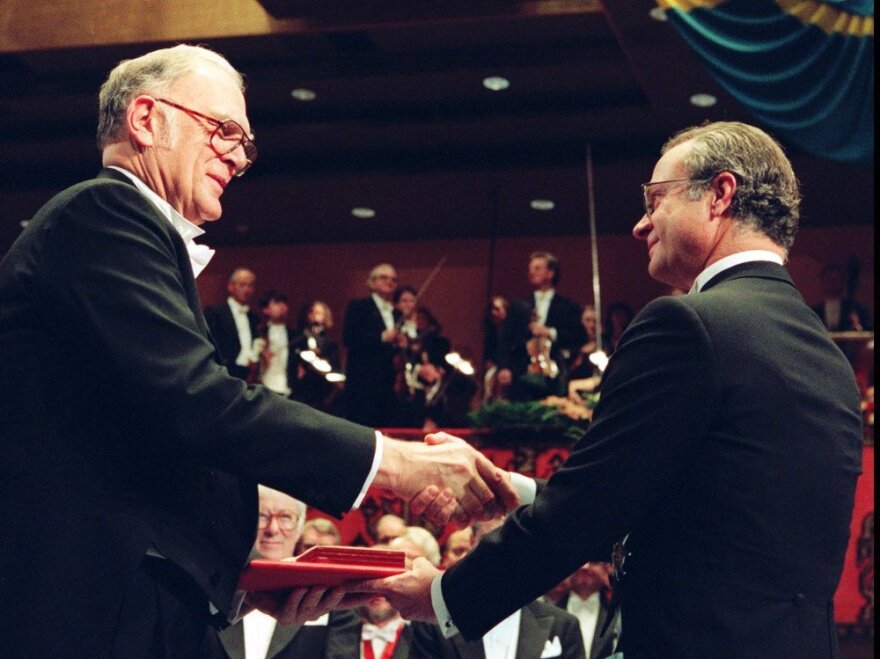The man who warned us that aerosol spray-cans could destroy the earth's protective ozone layer has died.
F. Sherwood Rowland, better known as Sherry Rowland, was a Nobel-prize winning chemist at the University of California, Irvine. And he didn't just keep to the laboratory: He successfully advocated for a ban on ozone-destroying chemicals called CFCs.
Rowland was a towering figure in several senses of the world. He was big, 6-foot-4, and had a commanding presence in any room. He spoke his mind with directness. And his thoughts were firmly grounded in science. He put those qualities on very public display when he started looking into chemicals called chlorofluorocarbons, or CFCs.
"This started back in 1972 and 1973 with curiosity on the part of a laboratory chemist, namely me," Rowland told NPR in an interview, "about what would happen to the chlorofluorocarbon gases, which had just been discovered as being present in the atmosphere, essentially everywhere."
Rowland and a post-doctoral researcher, Mario Molina, discovered these chemicals would waft into the stratosphere. Every CFC molecule can destroy 100,000 molecules of ozone. Ozone in the upper atmosphere protects the planet from harsh ultraviolet sunlight. Life on Earth couldn't exist without the ozone layer.
"I came home one night and my wife asked me how the work was going. And I said, 'Well, it's going very well — except it looks like it might be the end of the world,'" Rowland said in 1995, when he was awarded the Nobel Prize in chemistry along with Molina.
But Rowland was not the kind of man to sit in his lab and bemoan the fate of the Earth.
"Sherry Rowland wasn't just a great scientist. He was a wonderful human being," says Michael Oppenheimer at Princeton University. After making his discovery about the impending threat to the ozone layer, "he worked very hard to make sure that the political system did something about it."
That meant getting the word out about spray cans and air conditioners containing CFCs. He aroused a public to be concerned that their underarm spray might come at a terrible price. He stood up to industrialists who were worried that banning CFCs might harm their business. And he was the public face of this issue at many hearings on Capitol Hill.

Eventually, the Reagan administration championed a treaty to ban these chemicals worldwide.
Ralph Cicerone, president of the National Academy of Sciences, says Rowland's straight talk about science led to a deep, new public appreciation for our impact on the earth.
"The notion that something you could hold in your hand, one of these aerosol spray packages, was capable of influencing the physical environment worldwide, instead of just the room where you were using it, was startling," Cicerone says.
One reason Rowland was so credible was he didn't come off as an ideologue. He followed the science and called things as he saw them.
"Rowland's group had analyzed mercury in swordfish and found a great deal of the mercury being found in swordfish was natural," Cicerone says. That earned him rebukes from environmental activists.
And, Cicerone says, along with Rowland's integrity was his personal warmth. "I considered him my best friend, but I've been telling people that a lot of people considered Sherry their best friend. He was that kind of a guy. He had many best friends."
Rowland kept asking probing scientific questions into his 80s. He kept studying trace gases in the atmosphere. But he also turned his attention to trace gases in human breath. He had an idea that those gases could be a powerful way to diagnose disease. If that proves to be the case, it will be another legacy for Sherry Rowland. He died Saturday from complications of Parkinson's disease at the age of 84.
Copyright 2021 NPR. To see more, visit https://www.npr.org.




